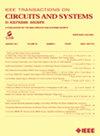An Energy-Efficient Image Deblurring Accelerator With Quad-Base-Quad-Scale Quantized Format and Layer Normalization-Aware Optimization
IF 4.9
2区 工程技术
Q2 ENGINEERING, ELECTRICAL & ELECTRONIC
IEEE Transactions on Circuits and Systems II: Express Briefs
Pub Date : 2025-07-07
DOI:10.1109/TCSII.2025.3586657
引用次数: 0
Abstract
This brief proposes a novel data-format-based image deblurring accelerator with layer normalization and UNet architecture optimization for mobile cameras. As the demand for photography in dynamic environments continues to grow and the limitations of physical stabilization are tightening, post-processing methods to restore sharp images have gained increasing attention, notably deblurring methods based on convolutional neural networks. However, their heavy computational cost hinders their integration into mobile computing platforms. The proposed accelerator enables energy-efficient acceleration of deblurring through the following three key features: 1) A Quad-base-Quad-scale Quantized format that maintains image quality with only 8-bit, reducing external memory access (EMA) by 33% and achieving 75.7% higher multiply-and-accumulation (MAC) energy efficiency compared to conventional 12-bit precision; 2) A Layer Normalization-Aware Optimization technique, enabling parallel normalization and fusion of affine transformation; 3) A dual-stationary systolic array architecture that selects the optimal dataflow for each UNet block based on processing element (PE) utilization. As a result, the proposed accelerator achieves 2.49 TOPS/W, which is基于四基四尺度量化格式和层归一化感知优化的节能图像去模糊加速器
本文提出了一种新的基于数据格式的移动相机图像去模糊加速器,该加速器具有层归一化和UNet架构优化。随着动态环境下摄影需求的不断增长和物理稳定的限制越来越严格,恢复清晰图像的后处理方法越来越受到关注,特别是基于卷积神经网络的去模糊方法。然而,它们沉重的计算成本阻碍了它们与移动计算平台的集成。提出的加速器通过以下三个关键特性实现节能加速去模糊:1)四基四尺度量化格式,仅以8位保持图像质量,减少33%的外部存储器访问(EMA),与传统的12位精度相比,实现了75.7%的乘法和累积(MAC)能效提高;2)层规范化感知优化技术,实现仿射变换的并行规范化和融合;3)基于处理单元(PE)利用率为每个UNet块选择最优数据流的双平稳收缩阵列架构。因此,所提出的加速器达到2.49 TOPS/W,比以前的工作高2.23倍,实现了移动应用的节能去模糊。
本文章由计算机程序翻译,如有差异,请以英文原文为准。
求助全文
约1分钟内获得全文
求助全文
来源期刊
CiteScore
7.90
自引率
20.50%
发文量
883
审稿时长
3.0 months
期刊介绍:
TCAS II publishes brief papers in the field specified by the theory, analysis, design, and practical implementations of circuits, and the application of circuit techniques to systems and to signal processing. Included is the whole spectrum from basic scientific theory to industrial applications. The field of interest covered includes:
Circuits: Analog, Digital and Mixed Signal Circuits and Systems
Nonlinear Circuits and Systems, Integrated Sensors, MEMS and Systems on Chip, Nanoscale Circuits and Systems, Optoelectronic
Circuits and Systems, Power Electronics and Systems
Software for Analog-and-Logic Circuits and Systems
Control aspects of Circuits and Systems.

 求助内容:
求助内容: 应助结果提醒方式:
应助结果提醒方式:


